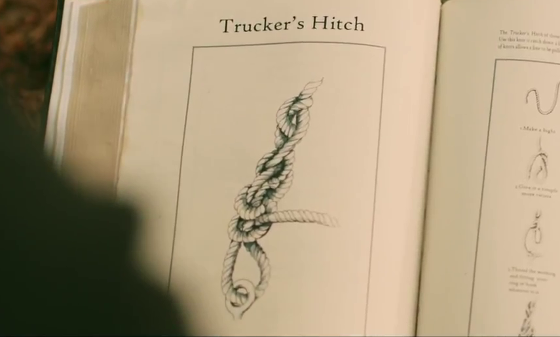The Trucker’s Hitch
Alex Westphal · 25 Sep 2014The truckers hitch has seen a fair bit of attention recently, most notably in a song/video from Norwegian comedy duo Ylvis:
It is awesome to see knots featuring prominently in social media but there are a couple comments that need to be made about the video:
- You will not learn to tie the truckers hitch (or any other knot) from the video
- It is impossible to know “every knot but one” (theoretically there are infinitely many knot, practically the The Ashley Book of Knots contains over 3800)
- The knot depicted in the video is the slipped overhand variant finished with two half hitches, making the knot look
excessively complicated

What is a Trucker’s Hitch?
The Trucker’s hitch is a compound knot that can be used as a crude block and tackle. The typical arrangement of the knot has long been used to tension lines and more recently for securing loads on trucks or trailers.
The typical arrangement is conceptually equivalent to a gun tackle “rove to advantage” (shown below), and thus, ignoring friction provides a 3:1 mechanical advantage.
The term Trucker’s hitch, being a compound knot, actually refers to a family of knots rather than a single knot. Any knot that has the requisite shape, regardless of how the loop is formed, is a “Trucker’s hitch”.
Sheepshank Version
The Sheepshank version (also Bell Ringer’s knot) is probably the prettiest way of tying a Trucker’s hitch. It is the least likely of the variants to jam but can fall apart if shaken or capsize of not dressed properly. Additional twists or half hitches can be added to the sheepshank portion to make it more secure. This version is often used to tension tent guy lines in scout camping competitions.
Slipped Overhand Version
The Slipped Overhand version is probably the most commonly used variant because it is easy to tie. The term Trucker’s hitch typically implies this version. While secure it has a tendency to jam, to avoid this twists can be added to the overhand knot to form a slipped Figure Eight knot or slipped Stevedore knot. When tying, care should be taken to ensure that the slipped part is on the running end rather than the standing end.
Fixed Loop Version
Another variant uses a fixed loop knot such as the Alpine Butterfly loop, Artillery loop, or Inline Figure Eight loop (shown below). Using a fixed loop is more secure but is more difficult to tie and can be prone to jamming under heavy load. This variant is often used when a permanent loop is desired for repeatability (e.g. a rope that is only used for tying a kayak on a specific vehicle)
Finishing
A truckers hitch on its own is not secure, so after tensioning it should be finished with either two half hitches around itself (shown below) or a round turn and two half hitches around the ring/anchor.
While finishing is an integral part of tensioning a line, the half hitchs shouldn’t be included in drawings, so as to avoid making the knot look overly complicated.
Alternate Use
If the standing end is affixed to a solid anchor, the Trucker’s hitch can be used as a crude block and tackle for lifting or moving heavy objects. Use in this manner is equivalent to a standard gun tackle (shown below) and ignoring friction, provides a mechanical advantage of 2:1 rather than the 3:1 provided by the standard configuration.
If pulleys or even carabiners are a available they should be used instead as they have substantially less friction and reduce wear on the rope.